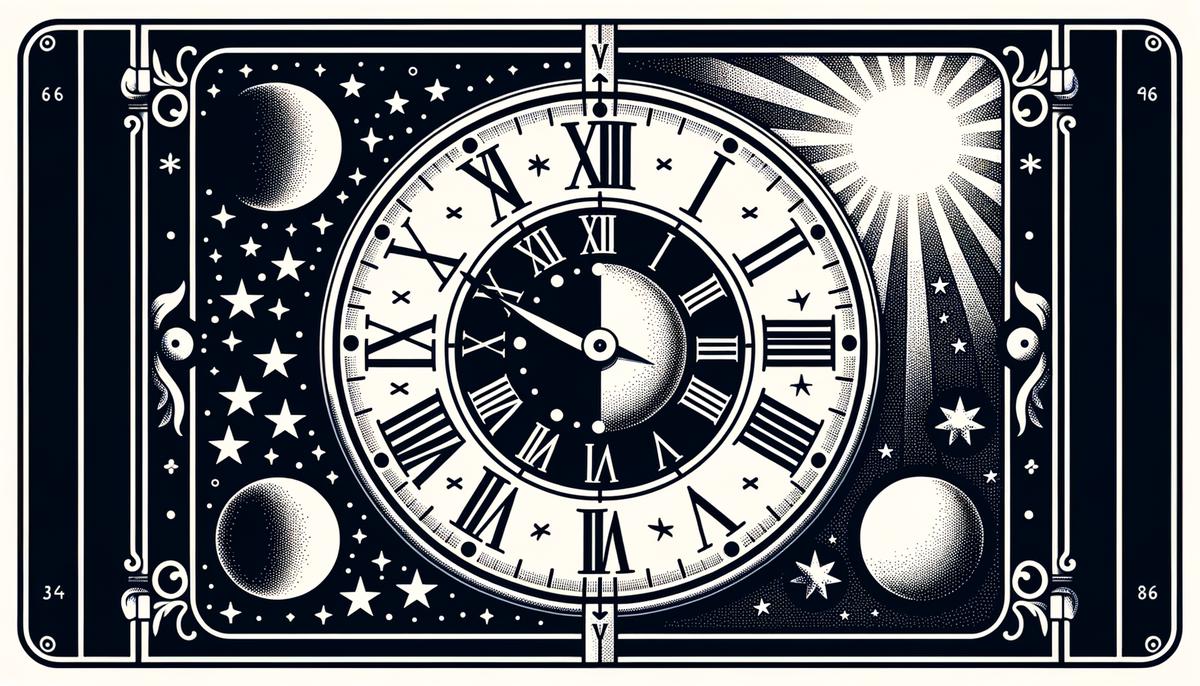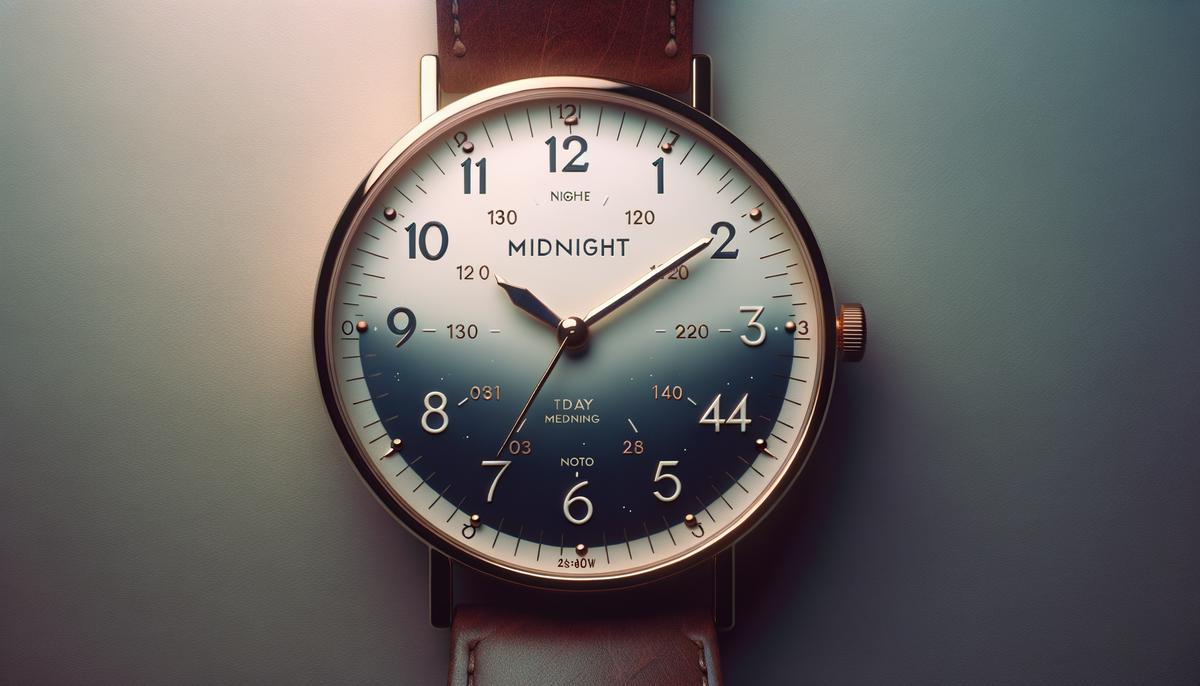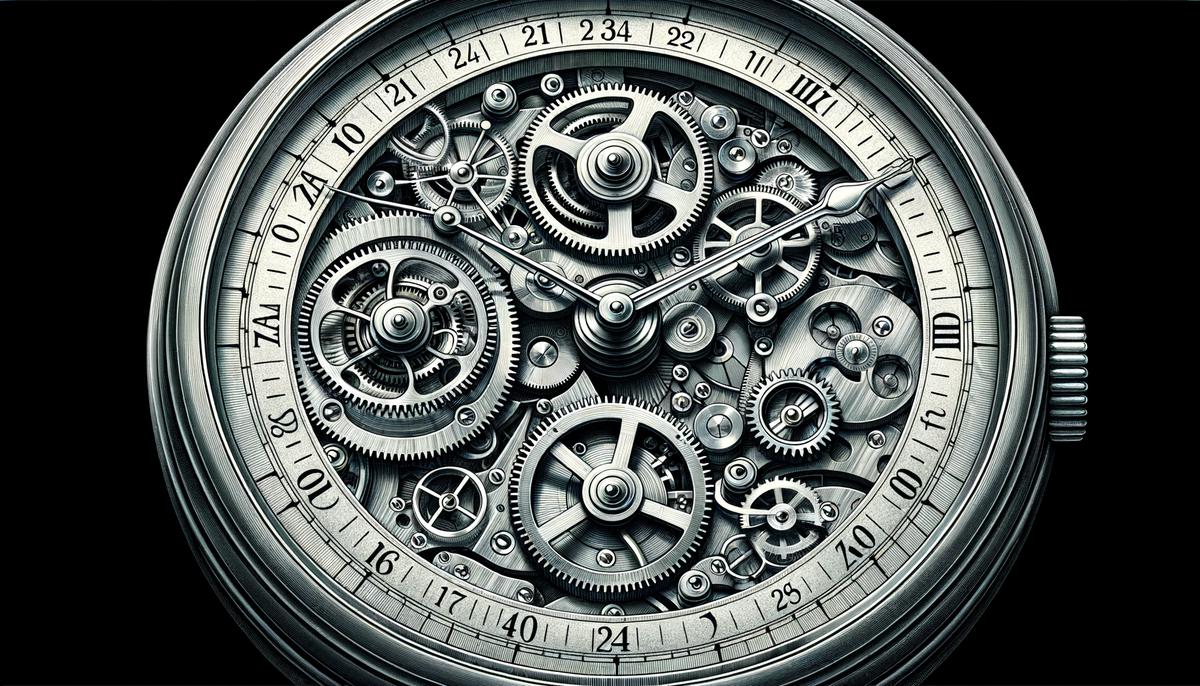When we look at our wrists, the watch we wear is more than just a tool; it’s a reflection of how we view and manage our day. Among the variety of watches available, the choice between a standard dial and a 24-hour dial offers distinct ways to engage with time. This discussion aims to shed light on the differences and unique characteristics of each, providing insights that might influence your next timepiece selection.
Understanding the 24-Hour Dial
Understanding the 24-Hour Dial vs. Standard Watches
In the realm of timekeeping, two primary faces grace our wrists – the standard watch dial and the 24-hour dial. Here’s what sets them apart, demystified for clarity.
Standard Watch Dials: A Quick Glance
The familiar face, the standard watch dial, divides the day into two 12-hour segments. It features numbers 1 through 12, cycling twice from AM to PM. For most, this is the go-to, the everyday kind that aligns with our daily schedules and societal time conventions.
The 24-Hour Dial: Unveiling the Difference
Venturing into the less common, the 24-hour dial presents a unique perspective on timekeeping. Unlike its 12-hour counterpart, it encapsulates the entire day in one full rotation of its hands. The numbers range from 00 or 24 at the top – signifying midnight – sweeping through the hours up to 23. There’s no AM or PM here; each hour of the day has its distinct position.
Why 24-Hour Dials Stand Out:
- Military Time: Originally designed for professionals needing precision (think military, pilots, and scientists), the 24-hour dial eliminates any confusion that AM/PM might evoke. There’s a clarity in stating “Meet at 15:00” versus “Meet at 3 PM.”
- Travelers’ Companion: For those globe-trotting across different time zones, or when using international timetables where 24-hour time is standard, these watches ensure you’re synced with local time practices.
- Aesthetic and Functionality: Beyond practicality, there’s an allure to the 24-hour dial’s uniqueness. Its display offers a novel way to view the day’s progression, catering to those seeking something different on their wrist.
Making Sense of Time with a 24-Hour Dial
Reading a 24-hour dial requires a slight adjustment but is straightforward once accustomed. Midday is marked as 12 or 1200, easing into the afternoon and evening hours until midnight returns to the start. The longer you use it, the more intuitive it becomes, marrying the passage of time with a single glance.
Choosing Between the Two
Preference drives the choice between a standard and a 24-hour dial. It boils down to lifestyle, occupation, or simply the desire for a conversation piece versus traditional time-telling. Whether you’re a connoisseur of unique timepieces or a professional valuing precision, understanding these differences can guide your selection, blending function with personal style.
Remember, in the end, both dials achieve the same fundamental goal – they keep time. Your choice merely adds to the narrative of how you interact with and relate to time in your daily life.

Reading a 24-Hour Watch
Understanding AM and PM on a 24-Hour Watch
Accurately reading time on a 24-hour watch is a crucial skill, especially for those used to the 12-hour format. Unlike the 12-hour dial, which revolves around twice to complete a day, a 24-hour watch runs through a full 24-hour cycle in a single revolution of the hands. This means the watch displays time from 00 to 23 hours, removing the need for AM and PM indicators. Here’s how to navigate this timekeeping method:
- Identifying The Day’s Start: On a 24-hour watch, the day begins at midnight, marked as 00:00. This is your zero-hour, the starting point of the 24-hour cycle. When you see 00, think of it as the very start of a new day.
- Morning Hours: From 00:01 to 11:59, the time is straightforward. It’s just like reading a standard clock but without the AM marker. For example, 02:00 is 2:00 AM, and 09:30 is 9:30 AM. The key difference is there’s no need to specify AM; the numbers tell you it’s morning.
- Crossing to Afternoon and Evening: Once the watch hits 12:00, you’re at noon. This is where attention is essential. Post-noon, time begins from 13:00 and climbs up. To convert these times to a more familiar 12-hour format, simply subtract 12. So, 13:00 becomes 1:00 PM, 16:00 is 4:00 PM, and so on, up until 23:59, which is one minute before midnight.
- Approaching Midnight: As the dial progresses towards 24:00 (or 00:00 of the next day), you’ve completed a full cycle. Remember, 24:00 and 00:00 at the watch’s display signify the same moment—midnight—but it’s traditionally shown as 00:00 to mark the start of a new day.
- Quick Reference: If you ever get confused, remember this simple rule: If the hour is more than 12, subtract 12 to find the PM time. If it’s less than 12, you’re in the AM hours.
By keeping these guidelines in mind, reading a 24-hour watch becomes second nature. This format is especially beneficial for clarity and precision in communication, particularly in contexts like military operations, aviation, and international travel, where misunderstandings about time can lead to complications. Plus, the unique aesthetic of a 24-hour dial is a conversation starter and offers a distinctive way to view time. As you wear and use your 24-hour watch, appreciation for this timekeeping method grows, blending functionality with a touch of worldly sophistication.

Mechanisms Behind a 24-Hour Watch
Now, let’s dive into the heart of how a 24-hour watch operates, which is a marvel of mechanical ingenuity and design simplicity. Understanding the mechanism behind this timekeeping masterpiece helps appreciate its functionality and the precise engineering involved in tracking time on a 24-hour scale.
The Gearing System: The Core of Time Display
Central to the 24-hour watch’s operation is its gearing system, quite different from the conventional 12-hour watch. Typically, the hour hand of a standard watch moves around the dial twice a day, thanks to the gear ratio set within the watch’s movement. However, in a 24-hour watch, the gearing is ingeniously calibrated so that the hour hand makes a single, slower rotation around the dial every 24 hours. This is achieved by adjusting the ratio between the gears connected to the movement’s hour wheel and the hour hand itself. Essentially, the gears are designed to halve the speed of the hour hand, enabling it to point to the correct hour in a 24-hour format at any given time.
The Movement: Precision Engineered
Beneath the watch’s face lies its movement, the heart that beats life into its functions. For a 24-hour watch, the movement is specially designed or modified to accommodate the unique gearing system. While the specifics can vary across different timepiece models and manufacturers, the principle remains consistent: a precise arrangement ensures the seamless operation of the watch, marking each hour distinctly on a 24-hour scale. Whether it’s a mechanical, automatic, or quartz movement, the mechanism must be finely tuned to ensure accuracy and reliability in timekeeping.
The Dial Layout: Reflecting the Mechanism
The watch’s face, or dial, visually represents the mechanism beneath it. In a 24-hour watch, the dial is laid out to align with the unique movement of the hour hand across 24 hours. Numbers or markers are spaced precisely, each representing an hour of the day. This layout is directly influenced by the gearing system, ensuring that when the hour hand points to a number or marker, it accurately reflects the hour in a 24-hour format.
Final Thoughts
In essence, the magic of a 24-hour watch lies in its gearing system and movement, elegantly engineered to track time differently from the traditional 12-hour method. The dial’s layout serves as the interface that brings this precise engineering to the wearer’s wrist, providing a continuous, clear indication of time, day and night. This intricate balance of mechanics and design not only makes 24-hour watches functional but also imbues them with a unique charm and appeal, celebrating the full circle of time every day.

As we wrap up our discussion on the unique world of timekeeping through the lens of standard and 24-hour dials, it becomes clear that our interaction with time is deeply personal and varied. Whether you lean towards the conventional beauty and familiarity of a 12-hour watch or embrace the precision and distinctiveness of a 24-hour dial, the decision enhances how you connect with the rhythm of day and night. Ultimately, the watch you choose to adorn your wrist with says much about your relationship with time, serving not just as a keeper of hours but as a companion in life’s moments, large and small.
Leave a Reply